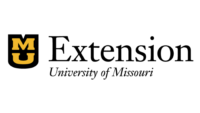University of Missouri Extension will host a feedlot school for cattle producers Aug. 4–5 at the MU Southwest Center in Mount Vernon. MU Southwest Research, Extension and Education Center is located at 14548 Highway H, Mount Vernon.
Details and registration can be found at feedlotschool.com.
Two previous schools were held in northwestern Missouri. “All accounts are that folks who have attended our two feedlot schools are successful and having some good luck taking the information we’ve given them about feeding cattle out in Missouri and applying it to their operations,” said MU Extension State Beef Nutrition Specialist Eric Bailey.
“We have a lot of great cattle here in the state of Missouri,” said Jim Humphrey, livestock specialist in Andrew County. “With the announcement of the packing plant that opened a little over a year ago in southwest Missouri, as well as the announcement of another plant scheduled to be put over by St. Louis and a couple more in Iowa and Nebraska, the interest in feeding cattle has grown significantly.”
In addition to Bailey and Humphrey, instructors will include Gentry County livestock specialist Shawn Deering, Polk County ag business specialist Wesley Tucker and Derek Brake, assistant professor of animal sciences.
“If you’re interested in feeding cattle out, go to a school like this, get to meet people and learn from the faculty, what they have to tell you,” said Casey Bowe, who attended the feedlot school at the MU Thompson Farm in Spickard.
Bowe is working with his son to feed out cattle on their operation near Laredo, Mo. He has built a commodity barn for feed and a covered area for his cattle. “Extension has been a great aid in helping people out on this stuff, so I highly recommend going,” Bowe said.
“We feel like we’re right on the front end of an opportunity for an industry to develop here in this state to add value to Missouri’s economy and meet some of our extension goals,” said Bailey.
MU Extension’s goal is to double the economic impact of agriculture in Missouri by 2030.
Source: University of Missouri Extension


Report Abusive Comment